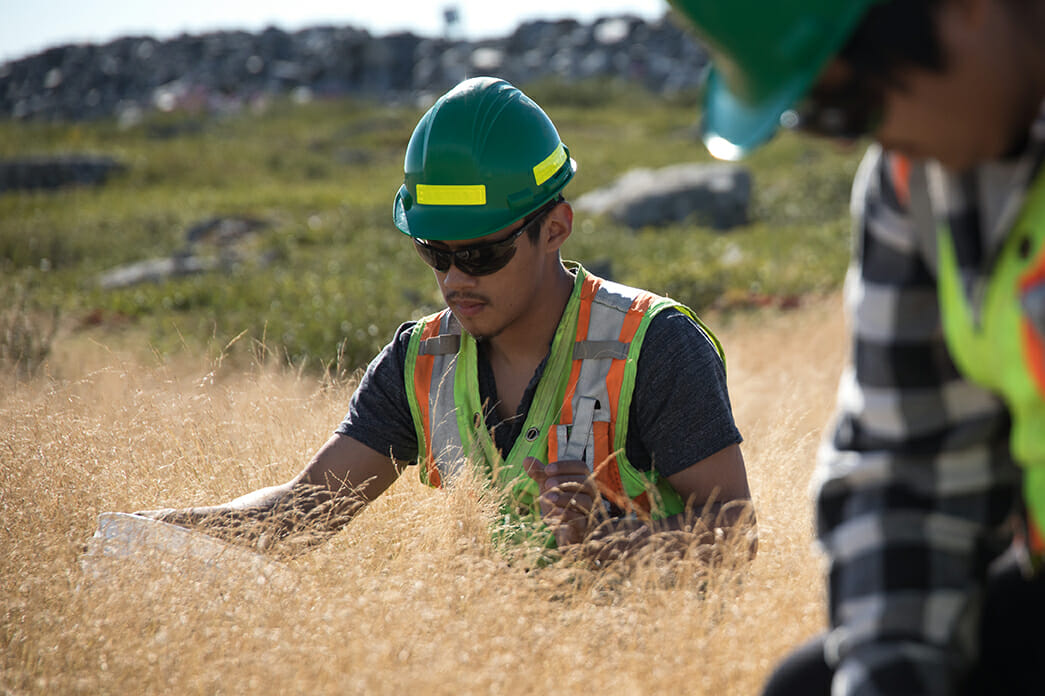Beyond the 4Cs: Taking Steps to Reduce Our Footprint
See how leading natural diamond producers are controlling and reducing their environmental impact.

Like all industries, natural diamond mining has an impact on the environment; its use of land, water and energy releases CO2 into the atmosphere. To ensure this impact is responsibly and ethically managed, the six members of the Natural Diamond Council have pledged to a common goal to safeguard the natural world and ensure sustainable management of precious natural resources. In order to achieve this goal, leading natural diamond producers collaborate with local governments and communities on initiatives such as recycling, waste reduction, water conservation and alternative energy solutions that will reduce carbon footprint—one diamond at a time.

Reducing Energy Consumption
The natural diamond industry has a series of programs in place aimed at reducing energy consumption and CO2 emissions, and whenever possible, they are tapping into renewable energy sources.
The Diavik Diamond Mine in Northern Canada has become a global leader in cold climate technology, proving that renewable energy works in a remote sub-arctic location. Innovative ways were found to prevent their four 9.2 megawatt wind turbines from freezing into inaction, despite temperatures falling below minus 40 degrees.
Research and Development
Natural diamond producers continue to advance innovation and technology, investing in research and development that will further reduce environmental footprint. At De Beers Group, they are working towards their goal of achieving carbon neutrality by 2030 with initiatives to reduce energy intensity through operating efficiencies, and to replace the use of fossil fuel wherever possible. They are also working with a group of leading scientists on a pioneering project which aims to capture carbon dioxide within kimberlite, the rock in which diamonds are found, through a process called ‘mineral carbonation’. This breakthrough research in carbon capture technology will no doubt lead to more advancements across an array of industries in the future.

Recycling and Waste Reduction
Leading natural diamond producers are also committed to limiting their current impact through the improvement of waste recycling and reduction.
Natural diamond mining does not require the use of large quantities of chemicals in the mining and recovery of diamonds. Instead, processing is reliant on water and pressure. The majority of waste generated in natural diamond production is waste rock, or material that is removed from the mine and placed in nearby storage areas.
Once mining is complete, waste rock is reclaimed and becomes part of the natural landscape again. For example, when the time comes to close the Ekati mine, located in a remote area of Canada’s Northwest Territories, the excavated areas will be reclaimed and returned to a viable environment for people and wildlife. Research is currently underway with regards to the best means of reclaiming the processed kimberlite surface through a combination of vegetation and rock that physically stabilizes the area.

Water Conservation
Another important component of the natural diamond industry’s commitment to the environment relies on water recycling and reuse. Through reduction and efficiency strategies, Petra Diamonds has ensured that 72% of water used in its operations is recycled.
Petra’s Williamson mine in Tanzania also supplies drinking water to local communities, and in 2016, at the Koffiefontein mine in South Africa, Petra refurbished an emergency water pipeline which provided water to local communities during a long period of drought.
Last year, Lucara diamond doubled its water recycling from 2018 and is collaborating with the Water Utilities Corporation and neighboring diamond company Debswana on a joint project through which Lucara will share excess water from its Karowe mine with the neighboring mine, allowing it to reduce its direct groundwater abstraction and to provide it to the local community.
Leading natural diamond producers understand that long-term development depends on their ability to minimize their environmental impact. By creating partnerships with communities and local governments in which they mine, and continuously striving to reduce their environmental footprint, the industry will continue to thrive for years to come.
